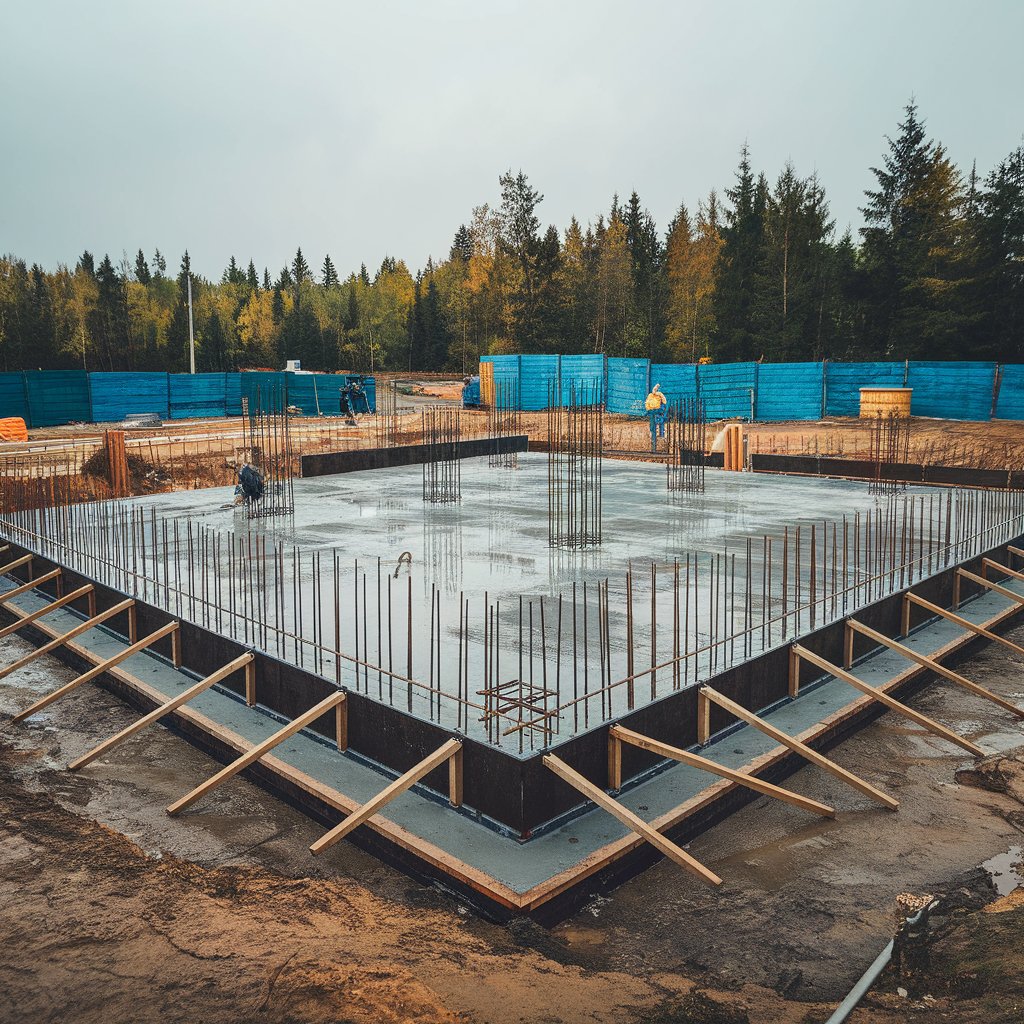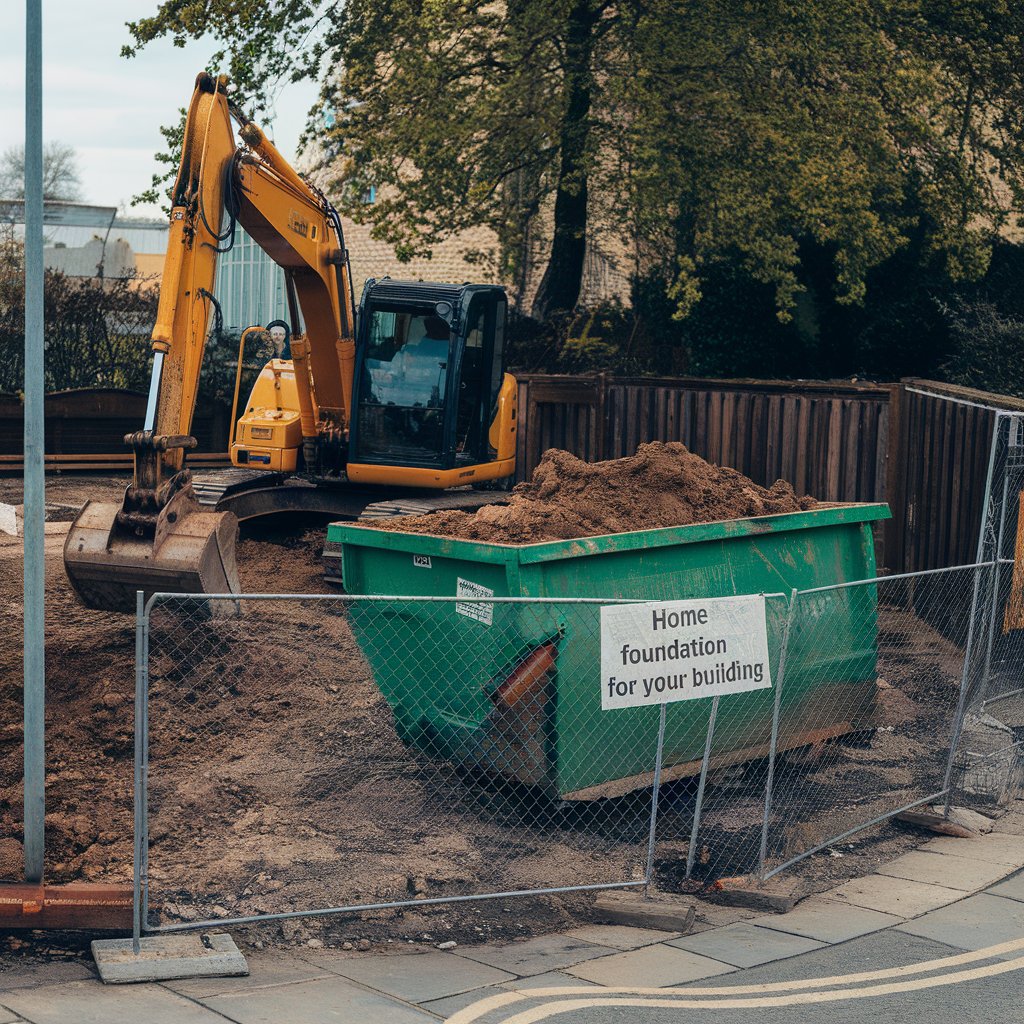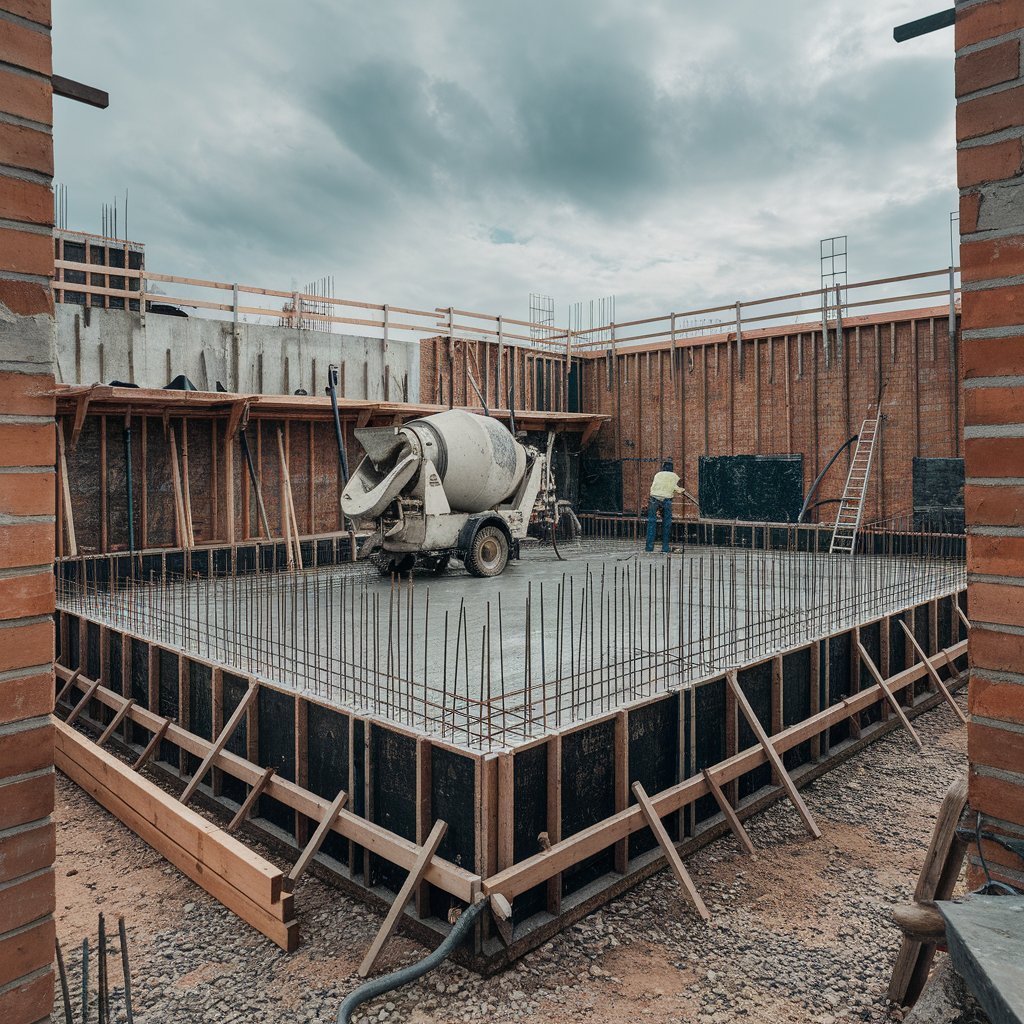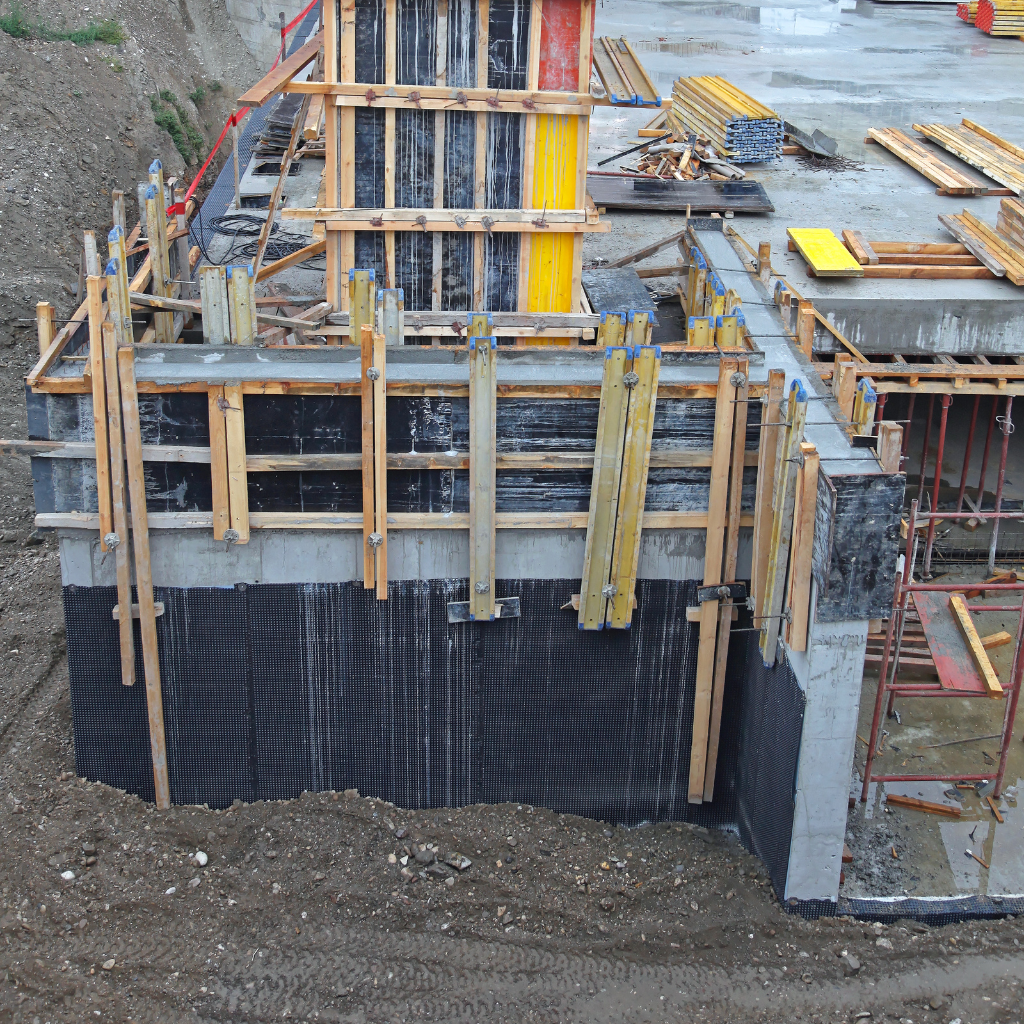House foundations vary to cater to diverse needs and environmental factors. Common types include concrete slab foundations, which are suitable for warm climates and offer a simple, cost-effective base. Raft foundations ensure stability across different soil types. Each foundation offers unique benefits and suits specific conditions, impacting a building’s stability and durability. Understanding these with the guidance of reliable home builders can help homeowners make essential construction decisions with confidence.
Key Takeaways
- Concrete slab foundations are cost-effective, ideal for warm climates, and provide a stable building base.
- Basement foundations add extra living space, enhance insulation, and are common in cold climates.
- Pier and beam foundations suit uneven terrains, providing adaptability and flexibility.
- Raft foundations distribute loads evenly, offering stability on varying soil conditions and minimising settlement risks.
What Are the Different Types of House Foundations for Homes?
Several foundation types are commonly employed in house construction, each with distinct characteristics and suitability.
Concrete and pile foundations serve different structural purposes, with concrete often used for its durability and pile foundations providing support in unstable soil conditions. Much like when weighing Timber frame vs brick for modern homes, the foundation choice depends on soil conditions, climate, and long-term durability.
In the UK, the choice of foundation type is affected by factors like soil composition and local climate, making certain options more appropriate than others.

What are the common types of foundations used in house buildings?
Foundations form the critical base of any home, determining its stability and durability. Various house foundations cater to different needs, influenced by soil conditions and architectural preferences. The concrete slab foundation is popular for its simplicity and cost-effectiveness, often chosen in areas with warm climates. Basement foundations, ideal for additional living space, are standard in colder regions with deeper frost. Beam and pier foundations, adaptable to uneven terrains, offer flexibility in shifting soil conditions. Understanding these options within the framework of house construction steps fosters informed decision-making and confidence in the building process.
| Foundation Type | Benefits | Suitable Conditions |
|---|---|---|
| Concrete Slab | Cost-effective, simple | Warm climates |
| Basement | Additional living space | Cold climates |
| Pier and Beam | Flexibility | Uneven terrains |
How Do Concrete and Pile Foundations Differ for House Construction?
Though concrete and pile foundations serve as the groundwork for house construction, they differ significantly in their applications and advantages.
A concrete foundation, typically a shallow foundation, is widely used for its strength and durability, providing a stable base for residential structures on firm soil. Its design involves pouring concrete into a trench to form a solid slab, making it suitable for varied climates and soil conditions.
In contrast, pile foundations are considered deep foundations, ideal for challenging terrains or when the soil lacks sufficient bearing capacity.
Comprising long, slender columns, pile foundations transfer loads to deeper, stable soil layers. This foundation design is crucial for building foundations in areas prone to shifting or uneven ground, ensuring the structure’s longevity and safety.
Which Foundation Type Is Most Suitable for Houses in the UK?
Selecting the appropriate foundation type for houses in the UK involves considering the local climate, soil conditions, and architectural needs. Strip foundations are commonly used due to their adaptability to various soil types and efficient distribution of building loads. In areas with stable soil, concrete slab foundations provide a robust and level base, enhancing thermal efficiency. The choice of house foundation should harmonise with the environment, ensuring durability and stability. Here is a comparison of foundation types:
| Foundation Type | Key Benefits |
|---|---|
| Strip | Versatile, cost-effective |
| Concrete Slab | Durable, energy-efficient |
| Pile | Ideal for weak soil types |
| Raft | Spreads loads over large areas |
| Basement | Adds functional space below ground |
Each foundation type is vital in creating a secure and lasting home.
How to Choose the Right Foundation Type for Your Home or Building
When selecting the appropriate foundation type for a home or building, several factors such as soil conditions, climate, and budget play crucial roles.
Evaluating the functionality of basement foundations can also guide decisions; this option offers unique benefits based on its intended use and environmental factors.
Additionally, concrete slab foundations provide specific benefits for residential homes, including cost-effectiveness and suitability for particular climates.
What Factors Should You Consider When Choosing a Foundation System for Your House?
How does one determine the most suitable foundation type for a home or building?
When choosing a foundation system, several factors should be considered. The specific needs of the building are paramount, including soil composition and climate conditions, which influence the choice of foundation materials.
Understanding the foundation cost is also crucial, as it must align with the overall budget while ensuring safety and stability.
The foundation system should support the design and weight of the house being built, with attention to future expansion possibilities.
Additionally, community standards and local regulations often guide the decision-making process, ensuring that the house is built with a foundation that fosters a sense of belonging and security within the neighbourhood.

What Are the Benefits of Concrete Slab Foundations for Residential Homes?
A concrete slab foundation presents several advantages for residential homes, particularly in regions with a stable climate and minimal risk of ground movement.
This type of home foundation is known for its straightforward design, which can lead to lower construction costs. By pouring concrete directly onto the ground, these foundations eliminate the need for basements, thus reducing the potential for moisture-related issues.
The simplicity of this residential foundation type also allows for quicker construction timelines, providing homeowners with their dream spaces sooner.
Furthermore, these foundations offer energy efficiency benefits, as the concrete acts as a thermal mass, stabilising indoor temperatures.
What Makes Raft Foundations Ideal for House Construction?
Raft foundations offer significant advantages for house construction by providing enhanced stability across various soil conditions.
They distribute the building’s load evenly, which reduces the risk of uneven settling compared to other foundation types.
Additionally, raft foundations often deliver superior cost-effectiveness and adaptability to challenging soil landscapes compared to concrete foundations.
How Do Raft Foundations Provide Stability in Different Soil Conditions?
By distributing the load of a building across a wide area, raft foundations provide enhanced stability, particularly in varying soil conditions.
This option stands out among other foundations due to its adaptability and strength. A raft foundation spreads the structure’s weight evenly, essential for maintaining balance in uneven or weak soil conditions.
This method minimises the risk of differential settlement that could otherwise compromise the integrity of the building. Raft foundations offer peace of mind for communities needing reliable and secure construction.
They serve as a unifying choice for those constructing homes in diverse environments, ensuring their buildings remain steadfast and secure. Hence, raft foundations are a favoured choice for achieving long-lasting stability.
What Are the Key Benefits of Using Raft Foundations Over Other Types?
The versatility of raft foundations makes them a preferred choice for house construction, offering several benefits over other foundation types. This type of foundation involves spreading a solid foundation across the entire footprint of a building, providing uniform support.
Unlike deeper foundations, raft foundations are particularly advantageous in areas with soft or expansive soil, where they evenly distribute the building’s load, reducing the risk of sinking or shifting. This foundation ensures stability by creating a large surface area that prevents differential settlement.
Additionally, by covering the entire footprint, raft foundations minimise the need for extensive excavation and complex structural work, fostering a sense of community by making building projects more accessible and cost-effective for homeowners.
Exploring the Costs and Benefits of Different Home Foundation Types
When evaluating a home’s foundation, it is crucial to consider financial and practical aspects. Foundations are one of the most critical elements affecting a building’s durability and performance.
Pile foundations, while potentially costly, offer stability in challenging soil conditions, whereas basement foundations may enhance a home’s long-term value by providing additional living space. Depending on structural needs and design preferences, foundations also vary in material, such as wood foundations or concrete.
Concrete foundations stand out for their durability and efficiency, making them a popular choice in residential construction.
What Are the Cost Implications of Choosing Pile Foundations for a Home?
Homeowners might consider pile foundations for their homes due to their ability to provide robust support in challenging soil conditions, ensuring homes are safe and stable.
However, this house foundation requires a significant investment, which is considered an expensive foundation option. The foundation costs can be higher due to the complexity and materials involved in installation.
Despite the initial expense, pile foundations can lead to fewer repairs over time, offering long-term savings.
How Does a Basement Foundation Impact the Long-Term Value of a House?
Considering the investment in pile foundations, homeowners might also evaluate the impact of a basement foundation on the long-term value of their property.
A basement foundation is crucial for enhanced usability and increased property value. When choosing a type of basement foundation, a guide to building foundations suggests considering the following:
- Additional Living Space: A well-maintained basement can transform into a living area, boosting the home’s appeal.
- Storage Solutions: It provides ample space for storage, which is highly desirable for families seeking a sense of belonging.
- Resale Value: A solid basement foundation can enhance resale value, as potential buyers appreciate the added utility.
However, if the foundation fails, it may adversely affect the property’s value, underscoring the importance of proper maintenance.
What Are the Advantages of Concrete Foundations in Residential Construction?
Concrete foundations offer significant advantages in residential construction due to their durability, strength, and versatility. Unlike traditional foundations, concrete types of foundation provide exceptional resistance to environmental stresses. This solid building choice ensures long-lasting stability, fostering homeowners’ sense of security and belonging.
| Advantages | Description |
|---|---|
| Durability | Resistant to decay and pests |
| Strength | Supports heavy loads and multi-story buildings |
| Versatility | Suitable for various soil conditions |
| Cost-effectiveness | Low maintenance and energy efficiency |
Concrete foundations contribute to a home’s structural integrity, accommodating diverse architectural styles. A properly constructed foundation can correct and stabilise the structure even if the house is not level. Modern options like an ICF foundation provide additional insulation and strength, allowing seamless integration into different landscapes and aligning with the community’s aesthetic values. By choosing concrete, homeowners invest in a foundation that supports their building and enhances its value and belonging within the neighbourhood.
How Do Different Foundation Types Affect the Structural Integrity of a Home?
The structural integrity of a home is significantly influenced by the type of foundation used. A foundation includes deep foundations that offer enhanced support for larger buildings by reaching stable soil layers.
Different foundations are suitable for varying soil conditions and building designs. For example, panel and pad foundations provide specific load-bearing benefits depending on the structure, while a stone foundation offers traditional durability. How a foundation is made affects its strength and stability, as types vary in construction methods and materials.
In the UK, foundations are often chosen from common types such as strip and raft foundations, each selected based on soil conditions and building requirements.

How Do Deep Foundations Provide Better Support for Larger Buildings?
- Load Distribution: Deep foundations distribute the building’s weight more effectively, reducing stress on specific areas.
- Soil Stability: They reach deeper layers that offer more reliable support than surface soil.
- Durability: They provide long-term durability and stability by anchoring into stable sub-layers.
What Are the Key Differences Between Solid Foundations and Slab Foundations?
Solid foundations, a primary type, are typically deeper and more robust, providing greater support in areas with unstable soil. They are often chosen for their capacity to bear heavy loads and resist shifting.
In contrast, slab foundations, another prevalent foundation type, are shallower and involve pouring concrete directly onto a prepared surface. This simpler foundation works well in regions with stable soil and is cost-effective.
The different foundation types influence a home’s durability and resilience. Solid foundations offer enhanced stability, while slab foundations provide a practical solution for lighter structures.
Choosing the right foundation type fosters a sense of safety and belonging in a home.
What Are the Most Common Foundation Types Used in UK Homes?
Choosing a new foundation in UK homes significantly influences their structural integrity. There are several types of foundations; selecting the right one is crucial when you build your house.
The most common foundations are usually strip or trench fill foundations, effectively supporting load-bearing walls. These foundations are also suitable for various soil conditions found across the country.
Here are four types of prevalent foundations:
- Strip or Trench Fill Foundations: Suitable for homes with stable soil conditions, often the go-to choice for many builders.
- Raft Foundations: Ideal for weaker soil, distributing the load across a larger area.
- Pile Foundations: Used in areas with poor soil stability, transferring the building’s load to deeper, more stable layers.
- Other Foundations: While less common, eight types of foundations are used across different scenarios depending on soil and structural needs.
These different types of house foundations ensure durability and longevity.
Conclusion
In conclusion, selecting the appropriate foundation type is crucial for the structural integrity and longevity of a home. Each foundation type, from concrete slab to basement, offers distinct advantages and challenges, impacting construction costs and suitability for various soil conditions.. Raft foundations, in particular, provide robust support for specific building projects. Ultimately, understanding these differences enables homeowners and builders to make informed decisions, ensuring a safe and stable living environment over the long term.






